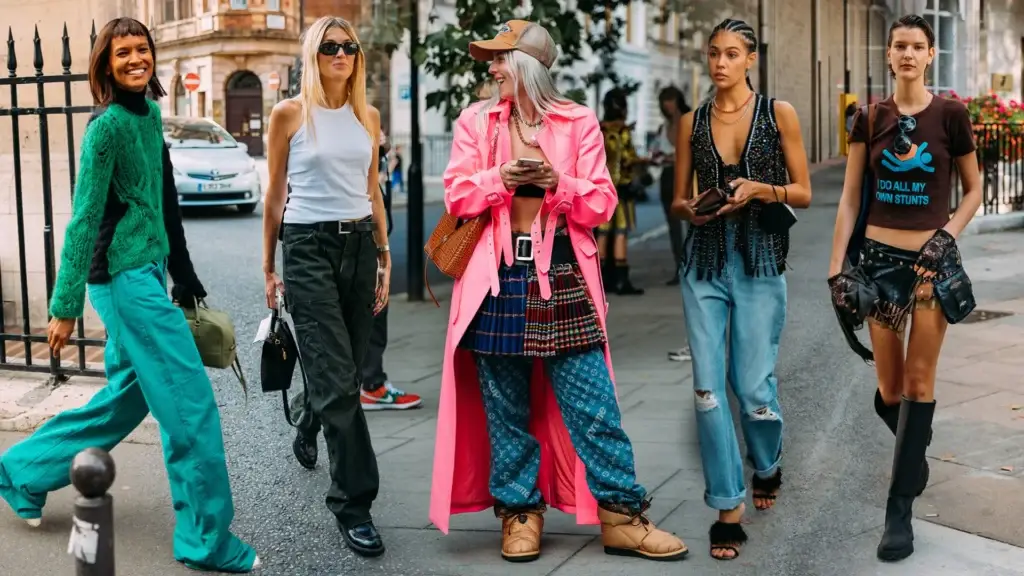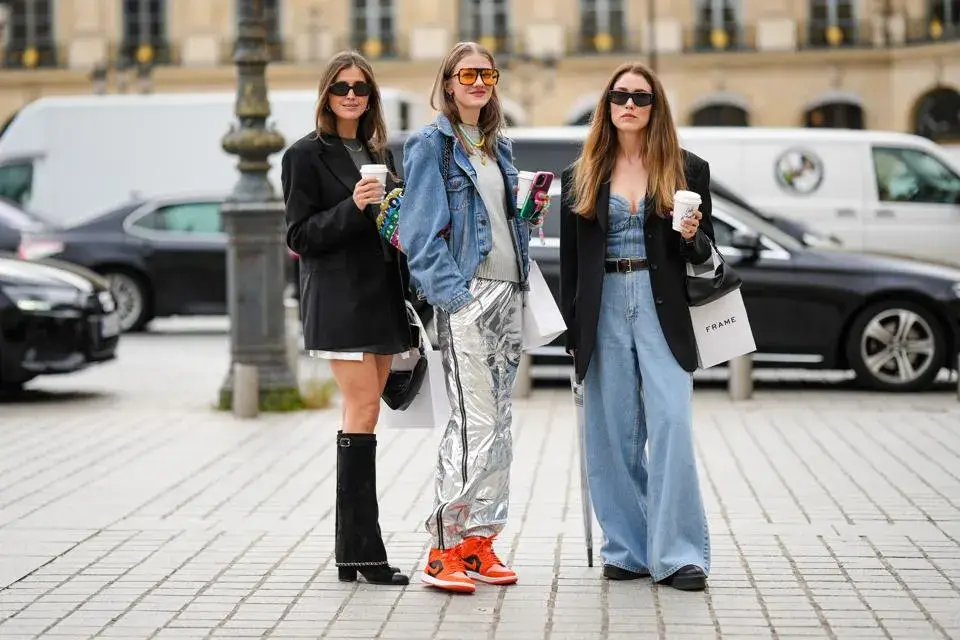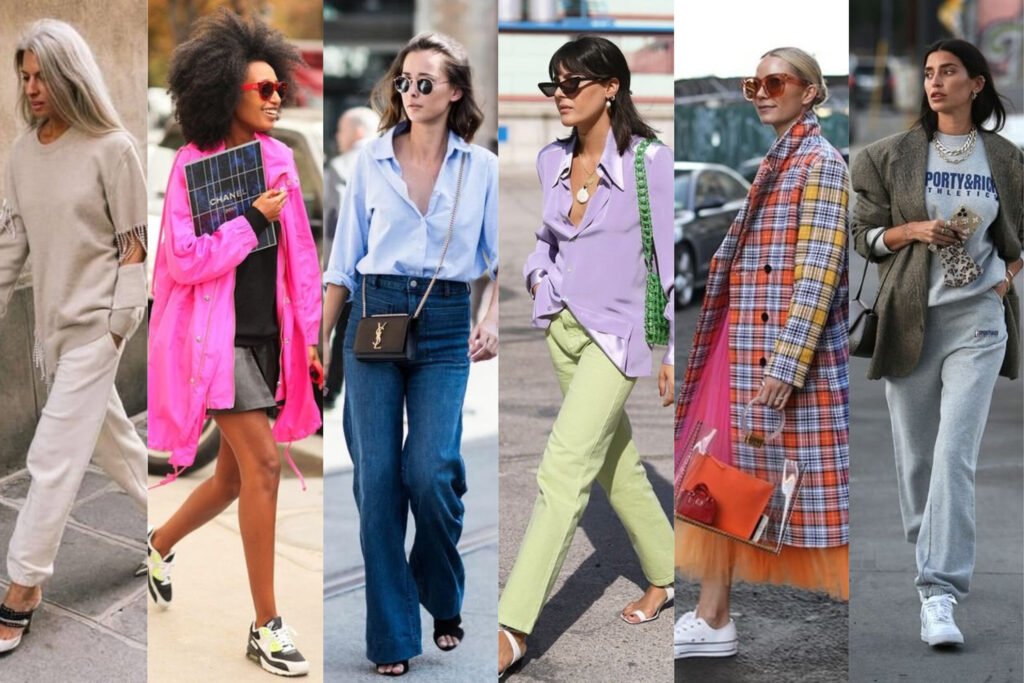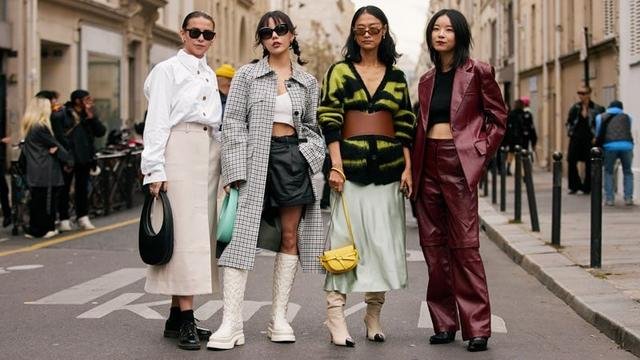Fashion has always been cyclical, but the digital age has fundamentally transformed how trends emerge, spread, and disappear. What was once a predictable 20-year cycle has become a complex, accelerated phenomenon driven by social media, celebrity culture, and rapid production technologies.
The Traditional 20-Year Rule: A Relic of the Past
For decades, the fashion industry operated on a simple principle: trends circle back every two decades. This gave styles enough time to rise, fade, and return with a modern twist. However, this traditional cycle has been dramatically disrupted by technological innovation and social media platforms that make trends rise and fall overnight.
Today’s fashion landscape is far more chaotic and dynamic. Styles from every decade make appearances at seemingly random moments, and a multitude of styles can be popular at the same time. This acceleration has created both opportunities and challenges for brands trying to navigate an increasingly unpredictable market.
The Five Stages of Fashion Trend Life Cycle
Despite the apparent chaos, fashion trends still follow a predictable pattern through five distinct stages: Introduction, Rise, Peak, Decline, and Obsolescence. Understanding these stages is crucial for brands, retailers, and consumers alike.
The Birth of a Trend
Every trend begins somewhere, and the origin of the trend typically finds itself at the hands of a major brand or designer during the on-season of Fashion Week. This stage is characterized by limited availability and niche appeal, often targeting high-fashion or edgy consumers.
A perfect example is Valentino’s FW22 collection, which featured a particular shade of neon pink. Following the collection’s debut, this shade of pink exploded in popularity and is now considered an established trend for this Winter 2023 among women in the USA, with a significant +44% growth compared to last year.
However, not all trends originate from haute couture. Grassroots movements, like the DIY fashion surge during the 2020 global lockdowns, demonstrate how consumer behavior can also drive trend creation. The key during this stage is that trends exist in small quantities at only a few retailers, as mass production awaits proof of consumer demand.

The Climb to Popularity
The second stage transforms a style from simply “new” to genuinely “trendy.” This transformation is largely driven by celebrities and influencers who serve as trend amplifiers. Stylists and media strategists often play a big role in this form of popularization, calculating which influencer will wear what.
The power of celebrity endorsement is evident in the biker boot trend. When Dua Lipa and fashion influencers like Camille Charriere embraced sturdy, buckle-clad biker boots in early 2022, our trend analysts documented an impressive 34% surge in the popularity of buckled boots for Winter 2023 compared to the preceding year.
This stage also sees the “copycat phenomenon” where bridge and fast-fashion brands create their own versions of high-fashion trends, making them accessible to wider audiences. Miu Miu’s fall/winter 2022 biker boot collection inspired countless iterations from brands like ZARA and ASOS, demonstrating how trends trickle down through different market segments.
The Height of Mainstream Appeal
At the peak stage, a trend reaches maximum popularity among mainstream consumers. Most major retailers carry the trend at accessible prices, while luxury brands often move away from it to maintain their trendsetter status. This stage presents an interesting paradox: most luxury brands no longer carry the trend as a result of its mainstream adoption.
The duration of peak popularity varies dramatically. Some trends, like the kitten heel sandal, enjoyed only one season of popularity in SS21, while others, like ribbed knit fabric, have maintained high popularity for consecutive seasons since Spring 2020.
This unpredictability makes trend forecasting invaluable for brands planning future collections. Companies must balance capitalizing on current trends while preparing for their inevitable decline.

The Beginning of the End
The decline stage follows closely behind peak popularity, often triggered by market oversaturation. A trend’s widespread popularity is often its downfall, because consumers tend to grow tired of seeing too much of a trend, or start to feel too “mainstream”.
The kitten heel serves as a prime example of rapid decline. Despite being boosted by external factors like the Sex and the City reboot and Y2K fashion revival, the trend rose so quickly that consumers grew bored just as fast. During this stage, retailers begin offering discounted prices before eventually phasing out the trend entirely.
The Temporary Death
The final stage labels a style as “out of fashion,” with consumers moving on to new peak trends. However, obsolescence doesn’t mean permanent death. The bomber jacket trend illustrates this perfectly – after dominating the market in 2015 through brands like Helmut Lang, Rick Owens, and Balenciaga, it disappeared for several years before returning in Fall Winter 2023 collections.
Heuritech’s Winter 2023 predictions reveal a 26% increase in the demand for bomber jackets among women in the USA compared to the Winter 2022 data, proving that fashion truly is cyclical, even if the timing has become less predictable.
The Digital Revolution: How Social Media Changed Everything
Social media platforms have fundamentally altered the fashion trend landscape. Instagram, TikTok, and YouTube serve as catalysts for virality, allowing trends to reach global audiences within hours rather than seasons. This democratization of trend diffusion has created both opportunities and challenges for the industry.
Influencers, from niche creators to mainstream celebrities, have become the new gatekeepers of fashion trends. Their ability to showcase emerging styles in real-time has shortened the traditional life cycle, making trends more dynamic yet more volatile. A single viral post can propel a trend from introduction to peak in a matter of days.
The Luxury vs. Fast Fashion Divide
The acceleration of fashion cycles has highlighted the fundamental differences between luxury and fast-fashion approaches. Luxury brands focus on setting trends through exclusive runway collections, emphasizing craftsmanship and long-term appeal. They introduce trends early but move on quickly to maintain exclusivity.
Fast-fashion brands, conversely, rapidly replicate trends to make them widely accessible at lower price points. Their fast production cycles allow them to capitalize on peak demand but also contribute to quicker trend saturation and decline. While luxury focuses on longevity and brand heritage, fast fashion thrives on speed and constant novelty.

Modern Trend Casualties: Rise and Fall in the Digital Age
Recent years have produced numerous examples of trends that gained rapid traction only to fade just as quickly:
Cottagecore captured imaginations during the pandemic with its pastoral-inspired aesthetic but gradually lost momentum as people returned to urban lifestyles.
Y2K Fashion dominated social feeds with its early 2000s revival but has started to decline as new aesthetics emerge.
Tie-Dye experienced a DIY-driven surge in 2020 but has since receded from mainstream collections.
Micro Bags briefly captured attention as statement accessories but proved impractical for everyday use.
These examples highlight the volatility of modern fashion, where digital culture fuels both rapid adoption and accelerated decline.
The Future of Fashion Cycles
As we move forward, the fashion industry must adapt to this new reality of accelerated trend cycles. Brands need sophisticated trend forecasting tools and real-time data analysis to navigate the increasingly unpredictable market. The traditional seasonal approach to fashion is giving way to a more fluid, responsive model that can quickly adapt to changing consumer preferences.
Understanding the five-stage trend life cycle remains crucial, even as the timeframes compress and the patterns become more complex. Success in modern fashion requires not just creativity and quality, but also the ability to read the digital zeitgeist and respond at the speed of social media.
The 20-year cycle may be obsolete, but the fundamental human desire for self-expression through fashion remains constant. What has changed is the speed at which we move through these expressions, creating a fashion landscape that is more diverse, more democratic, and more dynamic than ever before.
The modern fashion industry operates at the intersection of creativity, technology, and consumer psychology. By understanding how trends move through their life cycles in the digital age, brands and consumers alike can better navigate this exciting but unpredictable landscape.


